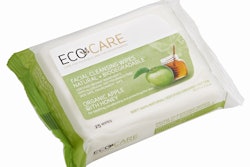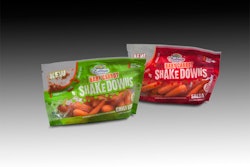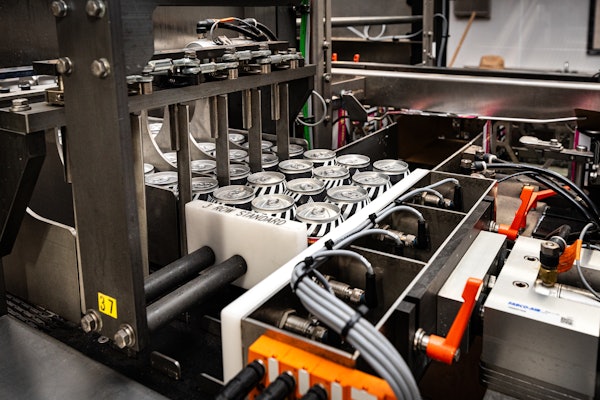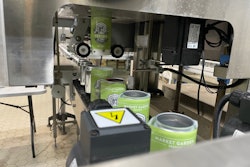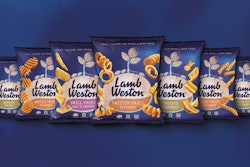1. More easy-open, easy-reclose options. A much wider range of opening treatments, fitments, and closures are available today than ever before, including linear tear characteristics, reclosable zippers that don’t require any tearing of the pouch header to open, and screw-on spouts for liquid pouches. Machinery has advanced, too, with increased ability to apply these features in-line during filling and sealing, with minimal downtime issues.
2. Clear high-barrier films. A new generation of clear films and coatings is beginning to approach the barrier properties of foil and metallized films. This provides new opportunities to showcase appetizing products while avoiding flex-cracking problems associated with foil and some older coating technologies. These structures also offer the potential for microwave-compatible pouches.
3. Penetration into entirely new categories. Flexible packaging tends to sweep through entire product categories, though admittedly over a period of years. Classic examples include tuna fish and pet food, where retort pouches are now common after decades of can dominance. More recently, baby food retort pouches (and thermoformed trays) are replacing glass jars. Flexibles are also being used for home and garden supplies such as fertilizers,
where resealability is a key feature.
4. A quick look ahead. Now that ketchup in larger retail flexible pouches is no longer a novelty, other viscous condiments that can be more efficiently evacuated from a pouch are a prime prospect. Test market successes in Western and Eastern Europe, Asia, and Latin America will tell the early tale. Health and beauty products, such as shampoo and liquid soaps, might also be ripe for conversion. Further expansion in soups, stocks, and canned fruit is likely
as well.
5. The slow roll of the cereal aisle. While flexible packaging has made inroads at both the high end (think granola) and low end (value cereals), experts agree that cereal makers simply have too much invested in existing bag-and-box equipment to expect widespread change anytime soon. Replacement is further complicated given the predominance of recycled paperboard cartons made from renewable resources in this application. Just because a package converts to flexible doesn’t mean consumers in a given country—especially the U.S.—will accept it. The new global perspective means packaging structures or formats—including flexible innovations—originate anywhere in the world.
6. More layers in coextrusion. Though it sounds counterintuitive, the addition of layers into a flexible packaging structure can actually lead to improvements in economics and functionality. How? It allows for more precise control of the layers. Three- and five-layer film coextrusion manufacturing lines are limited by the size of the extruders and by the design of the dies. More converters are moving to seven- and nine-layer coextrusion lines that provide more flexibility for desired functionality, thickness, and cost without overengineering the structure. One technique is to use less-expensive resins as bulking layers. Another is to split the barrier layer into two thinner layers, with one serving as a “backup” in case a pinhole breeches the other. This approach also multiplies the number of material interfaces a permeate must cross, further reducing permeation rates. Several technologies for splitting barrier materials into many layers are being introduced, with data showing more than linear improvements in barrier properties.
7. Shaped flexible packaging. The current generation of form/fill/seal packaging can produce more bag shapes and styles than ever. That’s important for consumer packaged goods companies hungry for new shapes that stand out on the shelf. Shaped pouches that cut a mostly two-dimensional, curvy shape have been out for years, though mostly outside the U.S. Machinery manufacturers are working on efficient equipment for creating pouches with a conical or three-dimensional shape. A challenge here is to hold down the design waste inherent in more complex profiles.
8. More retortable pouches. A retort package is “cooked” after it is filled at high-enough temperatures long enough to kill bacteria and microorganisms that can spoil food. Several factors are driving the growth of retortable flexible packaging. They are easier to open than cans, weigh much less, and can have a smaller environmental impact versus metal cans and glass jars. Additionally, pouches can minimize loss from denting or breakage and enable package innovations such as cooking capability. And then there is the taste. Many believe the food from retortable pouches tastes better because of less-abusive sterilization heating cycles. The flat geometry of the flexible package means that food closest to the surface doesn’t need to be heated for as long or at as high a temperature before the food in the center has received the proper time and temperature exposure to ensure sterility.
9. Pouches’ wide impact. Because pouch structures can be customized to meet a wide range of barrier requirements, a host of new product applications are emerging: liquid, viscous, powdered, granulated, and particulate. This growth will cross multiple markets, including food and beverage, cosmetics, healthcare, pet foods, automotive, pharmaceutical, and agricultural. While pouch-filling speeds are not yet up to par with those of many conventional container types, this gap is closing, particularly in the dry product arena.
10. Sustainable packaging is taking on new forms. Many people play up the recyclability aspect of sustainability as it relates to packaging at the exclusion of the front end of a package’s life cycle. The carbon footprint of various packaging types has to consider many factors. For example, pouches offer tremendous energy savings both in their production and transport. Comparing rigid containers versus pouches, you can ship one truckload of flat pouches that have the equivalent product-holding capacity of upwards of 15 to 25 truckloads of empty rigid containers. Packagers can also save hundreds of thousands of dollars in packaging material costs and secondary packaging operations systems due to simplifications of packaging systems, such as the elimination of labeling, capping, etc.
11. Waste-to-Energy is coming of age. Following a successful track record in European and Asian countries, Waste-to-Energy, or WTE, is becoming a more viable end-of-life option for flexible packaging materials in North America. Advances in municipal incinerator technology have tackled issues related to harmful emissions, increasing the likelihood that U.S. companies will support efforts to turn waste into electricity, synthetic gas, fuels, and recycled materials. WTE can reduce air emissions, landfill loads, energy usage, and costs. Also, by reducing municipal solid waste and generating energy that can be sold back to the local grid, organizations can help reduce energy costs community-wide. This, in turn, may feed into larger goals, such as compliance with corporate social responsibility initiatives.
Liked this article? Download the entire playbook here.
